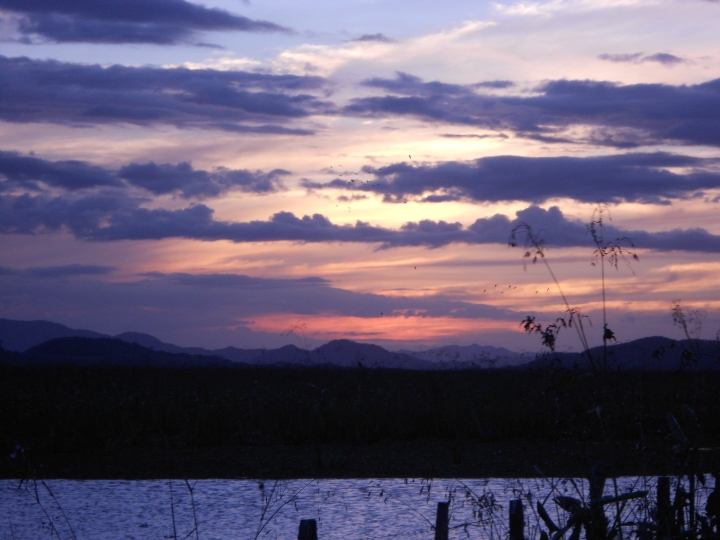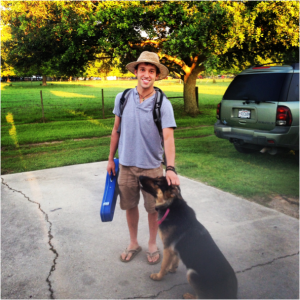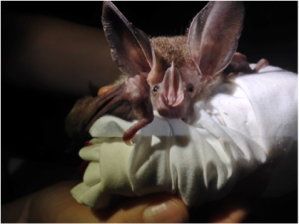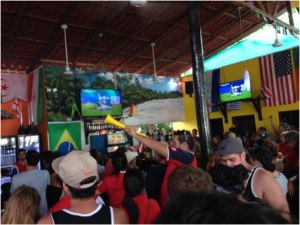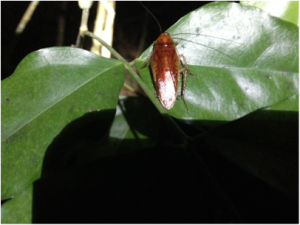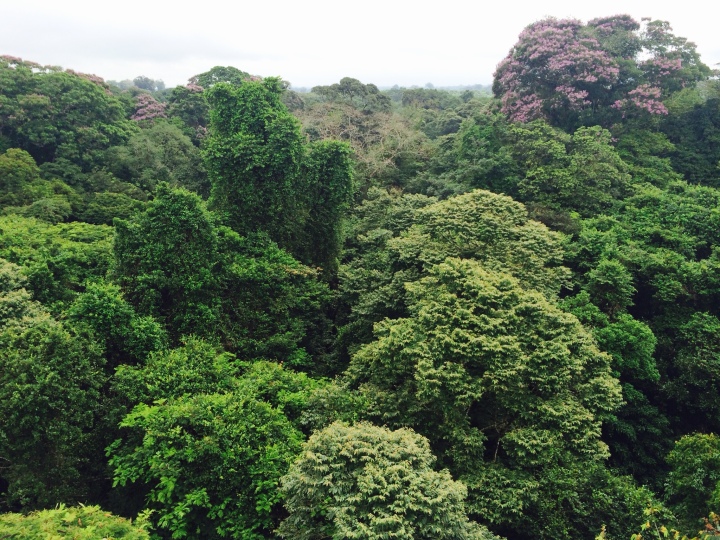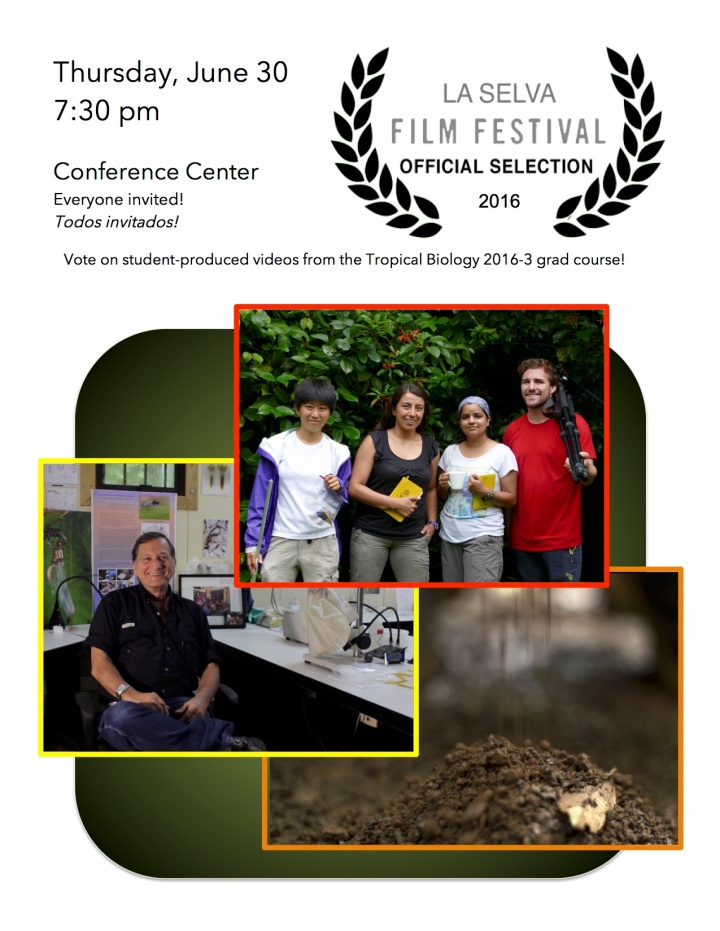
Images
Why did you choose the Gringos Field Ecology OTS course instead of the Latinos Ecología de Campo de OET???
ImageThis was an interesting question I was asked several times during the course so I have been thinking in the answer and I would like sharing it. I think my answer is divided in two parts, the first one includes the reasons why I chose Gringo’s course and the second one includes the reasons why I would recommend it since I survived it haha.
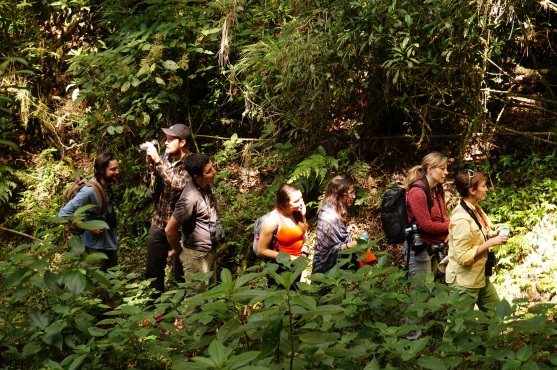
The main reason why I chose the Americans course was the language, English!!! After 15 years of English classes in Peru I still need English classes in real life, that real moments in which you have to think fast, open your mouth and move your tongue to express yourself in English. Also because I was feeling completely ready to stay out from my comfort zone… what could be worst?… I’m not anymore in my country, with my people, costums and food (oh my Peruvian food). And my third reason!!! American Tropical biologists many times talk about Latin-Americans countries and they don’t even have been there, they don’t really know our reality or our reasons to study our nature, but they are good people, they just need to spend more time with us haha a little piece of Latin-American’s pride!!!
Once in the course, definitely you will practice and improve your English, with no time to even practice a statement before an oral presentation, it’s just about to loosen up and try to enjoy the moment. However, the best part about languages is that many gringos could speak a little bit of Spanish and they would probably have cute accents and ways to speak our lovely language. Pienso que son adorables and listening to them is buenaaazooo…You not only will be out from your comfort zone, you will have a moment to know and test yourself, so be ready for the new things you could discover, at the end of the way you will see there was a positive side. Definitely you will meet nice American people, at the beginning they will be funny and will keep distance from you but at the end even the tough one will hug you and scratch your head. But don’t worry, if at some point you need Latino’s love for sure there will be one more Latin@ in the course to bother you as just we know or some Centro American that will tell you Pura Vida!

Last advice… come on Latinos go for the Gringos Field Ecology OTS course, DON’T BE BABIES!!!!
Rossana (alias PERU)
Cajun Traveler
ImageOn the morning of June 9th 2014, I departed on a 6-week trek to the country of Costa Rica. Over the course of a month tropical ecology will be taught to us while me and fellow students travel around this country to see the different habitats it has to offer. Over the past few weeks extra hours have been devoted to collecting roaches, fixing problems that have arisen and editing various papers that I have been working on in preparation to leave the lab for such an extended period. The stress of having so many pots on the fire quickly faded away as the beauty of this country slowly sinks in.
My final farewell to my dog Ted, fiddle in hand
It is my honor and privilege as a scientist and a musician to be able to not only immerse myself in this country’s culture customs and people but also learn about the incredibly complex natural system that makes this country one of the most diverse areas on the planet. The ultimate goal of this blog will be to convey the beauty and uniqueness of the biodiversity seen in my travels and also the different cultures that we will be surrounded by, including both the natives and our fellow students. The fellow students that will be traveling with me are a very diverse group in itself. The areas of study range from fungi and tigers, all the way to pure statistical analysis. After meeting we did what all grad students do and sit and try to sound like we know what were talking about over more than couple of beers.
First night getting to know each other
The following morning we packed into the vehicle and headed to Cabo Blanco Absolute Natural Reserve for 6 days. Staying in a station with no air-conditioned located in a seasonally dry forest on the Nicoya Peninsula. Although we were on beachfront property the insanely intense schedule of OTS course calls for breakfast at 7 and continuous work until around 9:30 with very few breaks in between, this allows for little to no beach time. Although almost no free time is scheduled I did manage to pay a quick visit into the bay near our cabin when the chef of the research station cooked food I was allergic to and my lunch consisted of Ritz crackers, Chips Ahoy cookies, and a beer; for extra carbs. So goes the struggle of food allergies.
A quick walk from our cabin opens up to a beautiful view
For our first faculty lead project (FLP) I had the pleasure to work with Dr Gloriana Chaverri. I have always had a fondness for bats but not nearly at the level as this tica (female native of Costa Rica). Learning form this expert how to capture, release, and identify the bats was an amazing experience. Using data we collected we did a project on infestation densities of the ecto-parasite Streblidae (batfly) in relation to roost fidelity and group size in bats.
Bat of the family Phyllostomidae the defining character being its leafy nose
One excursion was allowed and myself along with the fellow students were taken out to the nearest town to watch the world cup match between Costa Rica and Uruguay game. Costa Rica won for the first time in 9 years. The passionate energy was amazing before the game even started with a drum-line present and couples breaking out into dance with the crowd sang along with the cheer song and only escalated as Costa Rica claimed victory. After the game it was a rush back to the site to collect bats
Ticos supporting their team
The time in-between catching bats in the nets were used to search for Blattodea species in Cabo Blanco. Unfortunately due to the status of absolute reserve absolutely no specimens were allowed to be collected and taken off the site so a few pictures of the unidentified cockroaches was the best I could do at this site.
Two of the many Blattodea resting on the leaves at night
The first week of this six-week course wraps up as we say farewell to Cabo Blanco. We soon depart to Palo Verde for 6 days. One final photo was taken on our last night there of the sunset. Tomorrow is the 1 km hike carrying both my luggage and the box of equipment to the OTS truck to bring us to the deciduous wetland preserve where the rumors of mosquitoes darkening the sky have already started to circle around the group. I’m quite confident I have the edge being from Louisiana but I guess we’ll find out.
Amidst the trees
Image
Today we climbed the observation towers into the canopy of La Selva. Here we were joined by several Great Green Macaws (Ara ambiguus) flying between the tree tops, their refuge of Dipteryx standing bright purple against the forest green. Standing 40 m above, we were saw a group of spider monkeys (Ateles geoffroyi) pass by and heard the calls of the White-necked Puffbird next to the platform. A beautiful perspective to see the forest.
“Time has a different quality in a forest, a different kind of flow. Time moves in circles, and events are linked, even if it’s not obvious that they are linked. Events in a forest occur with precision in the flow of tree time, like the motions of an endless dance.”
― Richard Preston; The Wild Trees
Large spider in the cloud forest…
Image
Cloud forest tarantula (Megaphobema mesomelas), Santa Elena Reserve, Monteverde, Guanacaste Province. A common spider in the premontane and lower montane forests of Costa Rica, above 1300 m.a.s.l. Even with this evil appearance, this species is easy to handle, but its sting could be painful, and its a good idea stay far from its abdomen (it has poisonous hairs that could blind your pretty eyes (“cégalo Satanás”=the most important thing the students have learned after observe Costa Rica matches in the World Cup). By other hand, this tarantula looks cute…right? (o va a llorar?)
Pura vida maes 🙂
Aprendiendo R en Costa RRRRRica
ImageThe group was paying attention to Jane while she was teaching about statistical analisis with R software in the middle of the pristine jungle of San Miguel , Reserva Absoluta Cabo Blanco, Península de Nicoya.
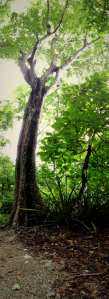
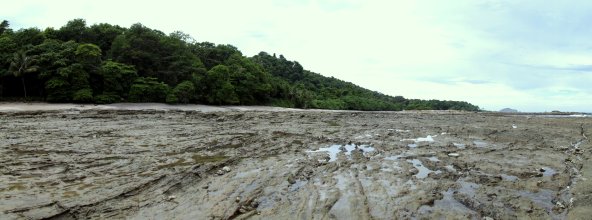 (Right) Pochote tree (Bombacopsis quinata), a common species in the costa rican dry forest. (Left) Intertidal zone in front of San Miguel Station. ~ V. Acosta, T.A.
(Right) Pochote tree (Bombacopsis quinata), a common species in the costa rican dry forest. (Left) Intertidal zone in front of San Miguel Station. ~ V. Acosta, T.A.
Grad student sightings part 1
Imagesunset over the marsh
Image